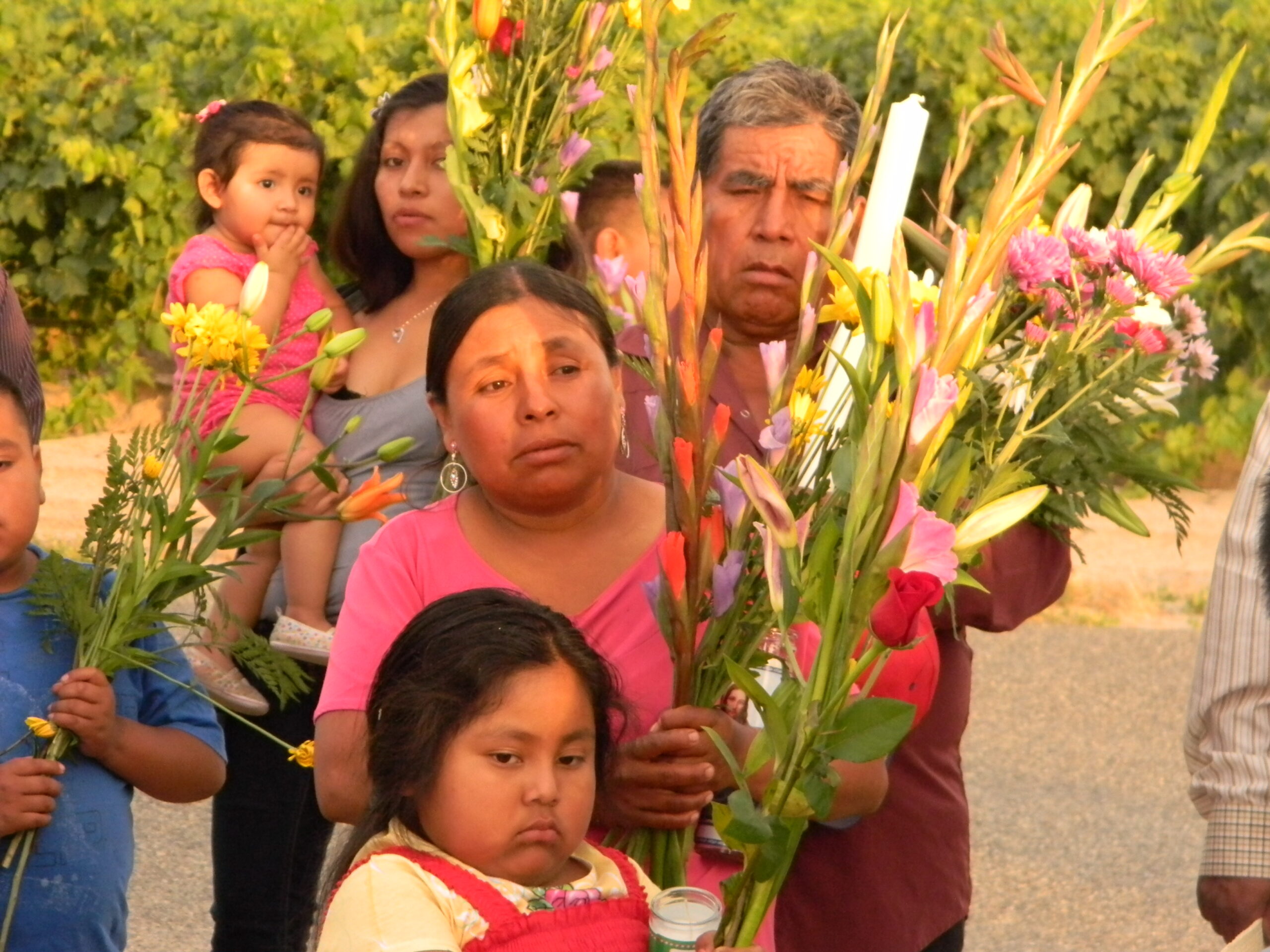The Heritage of Latino Catholicism / La herencia del catolicismo latino
(Del programa de la Primera Comunión para padres migrantes)
La herencia del catolicismo latino
Cada cultura hispana tiene una historia distinta. La cruz y la Virgen María son símbolos esenciales en la fe hispánica.
La Cruz
Consideremos la llegada de la fe católica al mundo hispánico. La fe llegó con los europeos que colonizaron las Américas. Para las Américas fuera de los Estados Unidos y Canadá, los europeos vinieron principalmente de España y Portugal, dos países católicos. Llegaron misioneros católicos con soldados e inmigrantes de Europa. Los misioneros sirvieron a los colonizadores y evangelizaron a los indígenas que sufrieron mucho por su derrota. Los indígenas aprendieron de los misioneros que solo había un Dios, y que Dios envió a su Hijo para salvar al mundo. El Hijo de Dios sufrió y murió en la cruz, pero los misioneros dijeron que el Hijo de Dios se levantó de entre los muertos y aún vive. Pero, si Jesús murió para que vivamos, la cruz no es un símbolo triste, sino un signo de esperanza. Cuando hubo persecución en México durante la Cristiada (1926-29), los mártires gritaron: “¡Viva Cristo Rey!”
La Virgen
Cada cultura hispana tiene su propia devoción a la madre de Dios, pero para comprender su parte en la evangelización de las Américas, uno necesita estudiar el Nican Mopohua. Mexicanos hacen reverencia para Juan Diego y la Virgen, pero pocos conocen el Nican Mopohua que describe los eventos de Guadalupe.
Después de la conquista en 1521, los misioneros católicos tuvieron poco éxito en la evangelización de los pueblos indígenas. Pero la experiencia de un convertido, Juan Diego, cambió la historia de México en relación con la fe católica. La historia de los eventos Guadalupanos no se mantuvo en el estilo de la historia moderna. La historia se mantuvo en el estilo azteca, por tradición oral. La historia no fue escrita por años después de las apariciones de Nuestra Señora de Guadalupe. Es una historia que invita al mexicano a caminar con Juan Diego para descubrir a Dios entre nosotros. La historia de la Viren es más que una historia milagrosa, es la historia de la evangelización latina.
(Si tienes observaciones o preguntas para Padre Migrante, envían las a padremigrante@gmail.com)
(From First Communion program for migrant parents)
The Heritage of Latino Catholicism
Each Hispanic culture has a distinct history. The cross and the Virgin Mary are essential symbols in Hispanic faith.
The Cross
Consider the arrival of the Catholic faith in the Hispanic world. Faith came to the Americas with the Europeans who colonized the Americas. For the Americas outside the United States and Canada, Europeans came primarily from Spain and Portugal, two Catholic countries. Catholic missionaries arrived with soldiers and immigrants from Europe. The missionaries served the colonists and evangelized the indigenous who suffered greatly from their defeat. The indigenous learned from the missionaries that there was only one God, and that God sent his Son to save the world. The Son of God suffered and died on the cross, but the missionaries said that the Son of God rose from the dead and still lives. But if Jesus died for us so that we live, the cross is not a sad symbol, but a sign of hope. When there was persecution in Mexico during the Cristiada (1926-29), the martyrs shouted, “Long live Christ the King!”
The Virgin
Each Hispanic culture has its own devotion to the mother of God, but to understand its part in the evangelization of the Americas, one needs to study the Nican Mopohua. All Mexicans know the outline of the story of Juan Diego and the Virgin, but few know the poem that describes the Guadalupe events, the Nican Mopohua.
After the conquest of the Aztecs (1521), Catholic missionaries had little success in evangelizing the indigenous peoples. But the experience of a convert, Juan Diego, changed Mexican history in relation to the Catholic faith. The history of the events of Guadalupe was not kept in the style of modern history. The story was kept in the Aztec style, by oral tradition. The story of the events was not written for many years after the apparitions of Our Lady of Guadalupe. It is a story that invites the Mexican to walk with Juan Diego to discover God in our midst. The story of Our Lady of Guadalupe is more than a miracle story, it is the story of Latino evangelization.
(If you want Padre Migrante to respond to your concerns or questions, write to: padremigrante@gmail.com)
Oh Jesús, tú nos llamas: “Síganme”. Bendice, Señor, a todos los que acogen tu llamado. Puede que el camino no sea fácil, pero tenemos la confianza de que todo es posible si caminamos contigo. Que este viaje nos abra los ojos a las maravillas de tu amor por nosotros. Oramos por toda tu gente, por todos los creyentes e incrédulos, por los líderes y seguidores. Oramos por la sanación, el perdón, la compasión, la justicia y la paz. Oramos para que, al seguirte, nosotros también podamos ser pescadores de hombres. Bendícenos en nuestro viaje.
O Jesus, you call us, “Come after me.” Bless, O Lord, all who welcome your call. The path may not be easy, but we have confidence that all things are possible if we walk with you. May this journey, open our eyes to the wonders of your love for us. We pray for all your people, for all believers and unbelievers, for leaders and followers. We pray for healing, for forgiveness, for compassion, for justice, for peace. We pray that as we follow you, we too can be fishers of men. Bless us on our journey.

